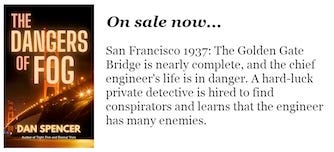Wiley Post: The Legendary One-Eyed Aviator and His Adventures
Written on
Chapter 1: The Early Years of Wiley Post
Wiley Post, born into a farming family, first saw an airplane as a teenager, sparking a lifelong passion for aviation. However, financial constraints led him to work as a mechanic in the Oklahoma oilfields. One day, while barnstormers were in town, their parachutist fell ill. Seizing the opportunity, Post eagerly volunteered to jump from the plane despite his inexperience. After successfully completing his first jump, he continued to perform nearly 100 more, all while maintaining his job in the oil industry.
This demanding work environment took a toll on him, resulting in a severe accident where a chip from an oil rig injured his left eye. An infection followed, ultimately leading to the loss of his eyeball. This unfortunate incident affected his depth perception, but he skillfully adapted over time.
With the compensation from his accident, Post was able to purchase his own plane. He generated income by teaching aspiring pilots and performing barnstorming flights. Additionally, he operated his biplane as an aerial taxi for those who could afford it, famously flying fellow Oklahoman Will Rogers to a local rodeo, forging a lifelong friendship.
Section 1.1: The Rise to Fame
Wiley Post soon caught the attention of affluent oilman FC Hall, who owned a state-of-the-art Lockheed aircraft named Winnie Mae after his daughter. Hall hired Post as his personal pilot, granting him access to the plane whenever it was free. By 1930, Post felt ready to showcase his skills and entered the Winnie Mae in a race from Los Angeles to Chicago, finishing in record time—over an hour and a half ahead of the competition. This victory impressed Hall, who encouraged Post to pursue further races.
However, Post had his sights set on a more ambitious goal: a solo flight around the world. At that time, only a zeppelin had achieved this feat, and Post was determined to change that. Alongside navigator Harold Gatty, he prepared the Winnie Mae for the challenge.
Section 1.2: The Solo Flight
Not content with his previous achievement, Post aimed to become the first person to fly around the world solo. In 1933, he modified his aircraft with cutting-edge technology, including a newly invented autopilot system. To combat fatigue during the long flight, he ingeniously tied a wrench to his finger; if he dozed off, the wrench would fall, waking him up.
Post set off from Brooklyn, traveling east across Europe, into Russia, over the Bering Straits, and into Alaska. His journey continued across Canada and the US, culminating back in Brooklyn with a flight time of 7 days and 19 hours, breaking his own record by nearly a full day. Upon returning, he received yet another ticker-tape parade in New York City.
Chapter 2: Innovations and Tragedy
Despite his successes, Post was not finished. The following year, he developed a pressurized flying suit, akin to a diver's suit, with a domed helmet to withstand high altitudes. He then soared to a record-breaking height of 50,000 feet over Chicago, discovering the continental jet stream.
In 1935, Wiley Post invited his friend Will Rogers to join him on an adventure in Alaska. They took off from Seattle in a newly modified seaplane, despite Post's concerns about the pontoons. Tragically, this flight ended in disaster; Post and Rogers lost their lives in a crash near Point Barrow, Alaska, on August 15, 1935.
Though only a few memorials, like an airport named after him in Oklahoma City, commemorate Wiley Post, his contributions to aviation surpass those of many celebrated figures from his time.
Explore the ambition and determination of aviator Eric Farewell as he shares his passion for flying, highlighting the adventures awaiting in aviation.
Delve into the stylish world of aviator sunglasses and discover why they remain a fashion staple among enthusiasts and trendsetters alike.

PAPERBACK & KINDLE AVAILABLE NOW